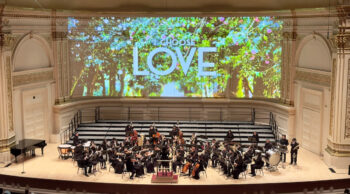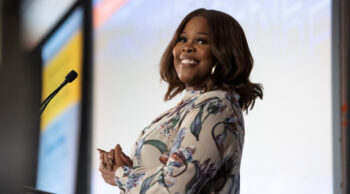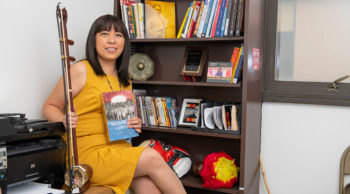Toro alumna and high school music teacher Amanda Chavez never imagined that someday she’d be conducting on the stage of Carnegie Hall. But on March 12, that’s exactly what she did, marking her and her students’ debut in the illustrious New York City venue. Chavez and 55 of her students had been invited to perform as a featured ensemble for the "I Choose Love" festival organized by National Concerts. Chavez, who earned her degree in music education and minor in Asian Pacific Studies in 2013, is the Director of Instrumental Music and Department Chair of Performing Arts at Jordan High School (JHS) in Long Beach, where she also directs multiple ensembles. When she received the invitation to ... Read More
Music
LA Opera Presents Free Live Simulcast of Verdi’s Otello on May 13
Source: LA Opera High-definition broadcast will be transmitted free of charge, live from the Dorothy Chandler Pavilion, to audiences at California State University, Dominguez Hills and at the Santa Monica Pier (Los Angeles) April 11, 2023 – LA Opera will present a live simulcast of its opening night of Giuseppe Verdi's Otello for audiences at two outdoor locations. At 7:30pm on Saturday, May 13, 2023, LA Opera's production of the towering operatic masterpiece will be transmitted live in high-definition video from nine cameras at the Dorothy Chandler Pavilion to large LED screens at California State University, Dominguez Hills and the Santa Monica Pier. The performance will ... Read More
Amber Riley Shares Struggles, Triumphs at Presidential Distinguished Lecture Series
Vulnerability is power. That was one of the key messages imparted by Amber Riley, the featured speaker for CSUDH's Presidential Distinguished Lecture Series on November 30. Riley, a Grammy-nominated singer, award-winning actor, producer, and author, spoke candidly about her personal journey of self-care and mental wellbeing, as well as the tools and lessons that have helped her along the way. The Presidential Distinguished Lecture Series program, established by CSUDH President Thomas A. Parham, invites celebrated public figures to discuss their experiences within the context of society's most pressing issues. Riley is a vocal advocate of mental health and speaks openly about her ... Read More
Jonathon Grasse’s New Book Explores Brazilian Music History
When ethnomusicologist, composer, and CSUDH Professor of Music Jonathon Grasse first started traveling to Brazil 30 years ago, he had no intention of becoming a historian of the country's music–he was simply exploring the country with his Brazilian wife. Before long, though, he became fascinated by the nation's diverse regional musical heritages, adapting his research and writing to teach a course on Brazilian music at UCLA, where he earned his doctorate. Eventually, his focus narrowed to the region that his wife hails from: Minas Gerais, a state in southeastern Brazil that is deeply connected to the nation's slave past and home to many traditions related to the African diaspora. Grasse's ... Read More
CSUDH Professor’s New Book Explores a Filipino Military Band’s Connection to U.S. Colonialism and Her Own Family History
In her new book, Instruments of Empire: Filipino Musicians, Black Soldiers, and Military Band Music during U.S. Colonization of the Philippines, CSUDH Assistant Professor of Asian-Pacific Studies Mary Talusan Lacanlale doesn't just reveal the hidden history of the Philippine Constabulary Band–she uncovers some of her own family history, as well. The Philippine Constabulary Band, a group of Filipino musicians originally formed in 1902, toured the world for several decades to great acclaim, but they also helped to convince audiences that the American colonization of the Philippines was worthwhile and just. The band dissolved at the outset of World War II, and its history was all but ... Read More




